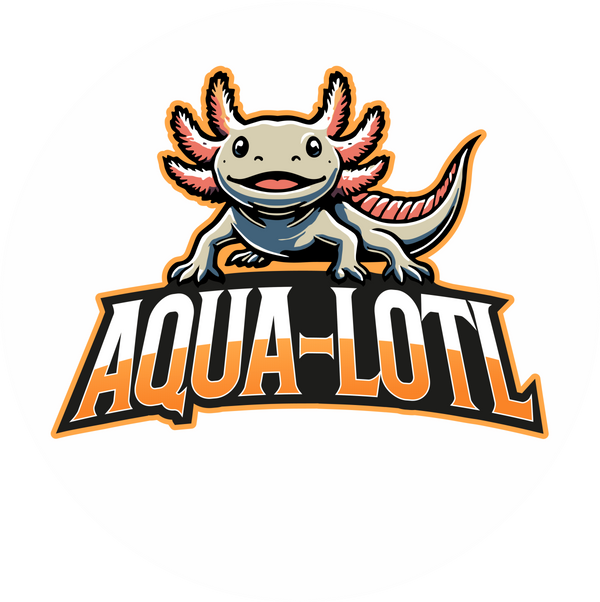Axolotl Feeding Guide by Age: What to Feed & When
Share
Feeding your axolotl the right way is one of the most important parts of keeping them healthy, active, and growing strong.

Overfeeding, underfeeding, or offering the wrong foods can lead to stress, digestive issues, and poor water quality.
In this post, we’ll give you a full axolotl feeding schedule broken down by age, plus safe food options and essential tips to help you care for your aquatic friend.
🐣 0–3 Months Old (Baby Axolotls)
Feeding Frequency:
🕒 2–3 times per day
Best Foods:
Baby brine shrimp (freshly hatched)
Daphnia (live or frozen)
Baby axolotls have tiny mouths and high energy needs. Feed small portions frequently and remove uneaten food quickly to prevent ammonia buildup.
Pro Tip: Use a turkey baster to spot-feed and remove debris after each feeding.
🧒 3–6 Months Old (Juvenile Axolotls)
Feeding Frequency:
🕒 2 times per day
Best Foods:
Blackworms (live or chopped)
White worms
Chopped earthworm pieces
Soft sinking axolotl pellets
Repashy Grub Pie (gel food)
Frozen bloodworms (occasional treat)
Juvenile axolotls are growing rapidly and need a protein-rich diet. Earthworms are ideal but may need to be chopped into smaller bites.
Avoid feeding only bloodworms — they lack the nutrition needed for long-term growth.
🐟 6–12 Months Old
Feeding Frequency:
🕒 1–2 times per day, depending on size and activity
Best Foods:
Whole or chopped earthworms (nightcrawlers or red wigglers)
High-quality sinking carnivore pellets
Repashy Grub Pie
As your axolotl grows, shift toward larger, whole foods and fewer daily meals. Monitor their body condition — a healthy axolotl should be thick at the base of the tail, but not bloated.
🐉 Adult Axolotls (1 Year and Older)
Feeding Frequency:
🕒 Every other day
Best Foods:
Earthworms (1–2 large worms per meal)
Sinking carnivore pellets (Hikari, Xtreme, or Northfin brands)
Repashy Grub Pie
Adult axolotls don’t need daily feedings. Every other day is plenty unless they’re recovering from illness or breeding. Overfeeding adults is a common mistake that leads to water quality problems and obesity.
Want variety? Rotate pellets and worms every other feeding.
🧠 Feeding Tips for Every Age
✅ Remove uneaten food after 15–20 minutes
Leftover food breaks down quickly and releases ammonia, harming your water quality.
✅ Spot-clean your tank after feeding
Use a turkey baster to remove uneaten bits from bare bottoms or sand.
✅ Test your water regularly
Rotting food = ammonia spikes, which can damage your axolotl’s gills or cause illness.
✅ Avoid feeder fish or crickets
They carry parasites and offer poor nutrition.
✅ Feed with tongs or a feeding dish
It reduces mess and helps you monitor how much your axolotl eats.
🐾 Final Thoughts
Feeding axolotls is simple when you follow their age-based needs. Earthworms and sinking pellets are your best staples, and younger axolotls require more frequent, smaller meals.
Always watch for:
Changes in appetite
Uneaten food
Floating or gasping behavior (a sign of water quality issues)
Want more tips on axolotl care?
Check out our [Axolotl Care Guide], or reach out to us directly through our [Contact] — we’re always happy to help!
